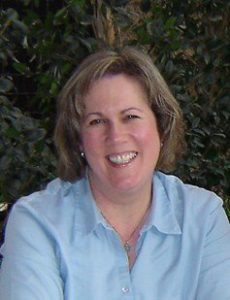When I first visited upstate New York several years ago, I kept getting the feeling I’d been there before, but that was impossible. I finally realized that I’d visited the area through the pages of a book. Several books, actually. Julia Spencer-Fleming’s Claire Fergusson and Russ Van Alstyne series is set in that area. I’ve read them all and they take place in icy winters, muggy summers, and fiery-leafed autumns. So of course I recognized the hills with orange-tipped trees and houses with screened in porches and pumpkins.
Location is said to be the three most important rules in real estate. Although often overlooked in fiction, it’s pretty important there too.
The locations in our romance novels need to be such that the reader can’t imagine that story taking place anywhere else.
J.D. Robb’s In Death series could not be set anywhere except New York City in the near future. The urban grittiness of the series is a perfect match to Lt. Eve Dallas’s voice and the tone of the books overall.
Not strictly a romance, but I recently read Miss Julia Speaks Her Mind, set in North Carolina. The southern voice and idioms make it the perfect location. Ann B. Ross set her series in a specific time and place, and the hot humid summer weather rose from the pages of the paperback and frizzed my hair. Margaret Maron’s Deborah Knott series does the same.
How do we make our location into a character in our stories? Let’s look at the examples I’ve already mentioned.
- Specificity. Spencer-Fleming talked about the crunch of ice underfoot, the slipperiness of the roads, the bone-numbing chill. And colors, like the flame-colored trees in the fall. Nora Roberts, writing as J.D. Robb adds aromas and noises to make the future New York come alive. She describes the smell of a chemi-head as he passes her in the booking department, and what a soy dog smells like being grilled by a street vendor, and the sound of a bus belching smoke as it rumbles by her.
- Voice and Tone. For books set in the south or areas with distinctive speaking cadences, capturing those patterns are essential. But beware of trying to write accents and particularly showing ethnicity by speech. In a Sue Grafton book. Kinsey Milhone was interviewing someone over the phone and at one point she realized they were African American and let her surprise show. The interviewee was (rightly) offended, and put on an elaborate “black,” accent, asking, “Yo, dis better fo yo?” (Grafton was making an effective point.) Use patois and jargon sparingly. Some parts of the United States refer to a soft drink as “pop,” others as “soda,” still others call them all “coke,” or “coca-cola.” If you’re writing about an area you’re unfamiliar with, find out those little idioms and differences.
- Use location to strengthen your characters. Could Scarlett O’Hara be from Missouri? No, she can only be from the South. She has a particularly genteel determination that’s bred into southern gentlewomen. Can Gidget be from Maine? Nope. She’s a beach girl with sand between her toes and sun-kissed cheeks.
In romance, location can be so much more than a setting for sunsets and picnics and first kisses. Those are nice, but with a bit of detail, your location will become a full character. One your reader can’t imagine your other characters and plot without.

Carrie Padgett lives in Central California, close to Yosemite, but far from Hollywood, the beach, and the Golden Gate Bridge. She believes in faith, families, fun, and happily ever after. She writes contemporary fiction with romance. Carrie and her Stud Muffin live in Central California with their cat and dog and within driving distance of their six grandchildren.
You can find her online at:
Twitter: CarriePadgett
Instagram: carpadwriter
Facebook: WriterCarriePadgett
Amazon Author Page: Carrie Padgett




No Comments